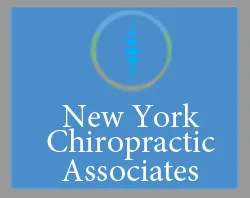- posted: Jul. 19, 2018
how A LOW-CARB DIET CAN IMPROVE YOUR HEALTH
Your blood pressure’s been sneaking upward. You’ve added a few extra pounds around your midsection. At your last medical appointment, your cholesterol and triglyceride levels were above optimal levels. Your doctor’s concerned, and in the age of profit-driven managed care, he’s also under pressure to treat your symptoms quickly, with a couple of hastily-scribbled prescriptions to drug your numbers down. It’s less than ideal, to say the least.
But what’s really going on? The symptoms you’re presenting are actually a sign that your ‘metabolic syndrome’ switch has been tripped, likely by a combination of lifestyle, advancing age and genetics. Defined by the Mayo Clinic as “a cluster of conditions,” which include “increased blood pressure, high blood sugar, excess body fat around the waist, and abnormal cholesterol or triglyceride levels,” metabolic syndrome is a canary in the coal mine. Metabolic syndrome won’t kill you overnight, but can set the table for the real killers: heart disease, diabetes and stroke.
You need to act, and fast. But prescription medications aren’t your only recourse, nor are they your best.
The good news is that for many, metabolic syndrome is beatable with a simple lifestyle change. Switching to a low-carbohydrate diet can literally save your life. I recommend it to many of my patients, especially those who have metabolic syndrome, insulin resistance, pre-diabetes, diabetes, heart disease or are just overweight. Here’s why:
LOW-CARB CAN GET BLOOD SUGAR UNDER CONTROL NATURALLY.
Sugar is evil stuff – and many of us are eating way too much of it. It fans the flames of inflammation and weakens immunity, wreaking havoc on the short and long-term health of the body. Excess sugar damages the heart, brain and just about every system in the body. Taking in more than the body can immediately use for energy leads to storage of the excess in the form of fat, and lays the groundwork for obesity and for diabetes. In fact, a new report from the US Centers for Disease Control and Prevention says half of Americans either have diabetes or are at risk for it.
Drastically cutting sugar intake is essential for good health, and going low-carb is a great way to do it. Start by eliminating sugar, white or otherwise: think soft drinks, desserts, processed foods. But also eliminate all grains, including so-called “healthy” whole grains, and limit beans and legumes, which break down to sugar in the body readily enough. Fewer carbohydrates in the diet means less sugar is being dumped into the bloodstream, so the pancreas doesn’t have to produce so much insulin to bring your blood sugar levels down. Carb-cutting is a simple, natural, drug-free way to stabilize both blood sugar and insulin by not constantly causing them to spike in the first place.
LOW-CARB MAKES YOU ACCOUNTABLE.
When you’re not paying much attention to what’s going into your mouth, it’s easy to eat far more carbohydrate than you need. If you’re carb-sensitive and tend to gain weight easily, tracking your daily ‘net carbs’ – that’s grams of carbs minus grams of fiber– is one of the best ways to keep yourself from going off the rails.
.
LOW-CARB CAN KNOCK YOUR HIGH BLOOD PRESSURE – AND YOUR WAISTLINE – DOWN TO SIZE.
Whether you’ve been diagnosed with metabolic syndrome or not, obesity or extra weight are also major drivers of high blood pressure. Although everyone’s blood pressure will vary slightly throughout the day, frequent or consistent readings north of 130/90 will likely land you in the prescription lane with your doctor.
For most people, a low-carb diet will get blood pressure back into the healthy zone while promoting weight loss. The results can be very quick – I’ve had patients see their blood pressure drop to healthy levels within as little as two weeks. Talk about (almost) instant gratification!
LOW-CARB EATING IS DELICIOUS!
If you’re thinking a low-carb diet sounds boring, think again. To us here at Be Well, it sounds delicious! You’ll eat a variety of wonderful foods throughout the day, including:
- Grass-fed and finished meats
- Pastured poultry, local, and/or certified organic
- Wild-caught fish and low-mercury fish
- Eggs from pastured chickens
- Full-fat butter, cream, and cheese, from pastured or grass-fed animals
- Oils like avocado oil, extra-virgin olive oil and coconut oil
- Non-starchy vegetables, including leafy greens, cruciferous veggies and avocado (which is technically a fruit)
- Low-sugar fruits, like raspberries, blueberries, blackberries, in small amounts
- Nuts and nut butters like almonds, hazelnuts, macadamia, pecans, walnuts, brazil
- Seeds like chia, flaxseed, hemp, pumpkin, sunflower
- Tea and coffee, preferably organic, non-GMO
- Small amount of beans, if they work for you (ideally soaked or cooked in a pressure cooker)
Meanwhile, you’ll be steering clear of:
- Starches, grains and baked goods
- Processed foods, including “low-fat,” “low-carb” and“sugar-free” faux foods
- High-sugar tropical fruits, dried fruits and fruit juices;
- Vegetable oils, including canola, corn, grapeseed, and soybean
- Franken-sweeteners of all kinds, such as Splenda, Equal, and Sweet ’N Low
- Most beers, lager, ale and sweet wines
Also limit your consumption of starchy vegetables. If you are going to drink alcohol, stick to a glass of dry red wine or pure spirits (vodka, whiskey, brandy, cognac or tequila) without sweetened mixers or juice.
